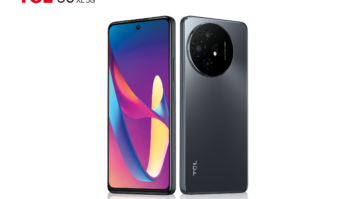
As wireless carriers large and small continue to prepare for the onset of 5G, some are turning to corporate consolidations in order to compete. Most notably is the pending merger of T-Mobile and Sprint, the third and fourth-largest wireless carriers in the U.S respectively. This deal, which allows the carriers to compete with AT&T and Verizon (the top two carriers), is not without its detractors.
Already approved by the Federal Communications Commission (FCC) and the Justice Department (DOJ), the merger is currently subject to an anti-trust lawsuit brought forth by a coalition of state attorneys general. The coalition believes this merger will be harmful to consumers by reducing industry competition and allowing for significant pricing increases.
The likelihood of the merger eventually going through does appear to be a certainty at this point, so what will this mean for the wireless industry and the future of 5G? What impact will the newly formed T-Mobile with more than 90 million U.S. customers have?
Effect on Larger Carriers
For the major nationwide wireless carriers, the future is all about the race to 5G supremacy. As it stands, Verizon and AT&T are larger and far better equipped to operate successful 5G networks nationwide. T-Mobile and Sprint can only hope to compete by consolidating their resources and high-band spectrum. Once they merge, their strategy appears to be investing primarily in 5G for rural broadband, aiming to service 96% of the rural U.S. by 2024. This will undoubtedly make the 5G race even more competitive among the nation-wide carriers than it already has been.
Effect on Regional Carriers
As mentioned, the new T-Mobile and Sprint conglomerate will focus on bringing 5G to rural markets. This strategy is based on Sprint’s longstanding relationships with rural carriers. T-Mobile, on the other hand, has been historically inhospitable to rural carriers which has opponents of the merger worried.
Rural carriers fear the new T-Mobile won’t cover their customers when they travel out of their local areas, requiring roaming coverage, or provide them with access to high-quality airwaves and spectrum. Additionally, many MVNOs are concerned about the effect the merger will have on their existing and future combined network resource utilization agreements. However, if T-Mobile raises rates and restricts access to coverage, this will drive their customers in these areas away from them and into the hands of competing rural carriers.
Effect on Consumers
When it comes down to it, how this merger will affect the average consumer is the most important outcome to consider.
The critics of this merger are many, including those who brought forth this anti-trust lawsuit. They claim that this consolidation will result in less competition in the wireless industry bringing about higher prices and therefore less access to coverage for consumers in rural and low-income areas as well as minority communities.
T-Mobile and other advocates, however, disagree with this outlook, claiming that the merger will actually mean lower prices for customers. T-Mobile has even promised not to raise prices for existing customers for the first three years. T-Mobile is already gearing up to bring 600 MHz spectrum, considered 5G-ready, to 300,000 square miles of new rural coverage area. This and other significant investments in rural wireless infrastructure will lead to improved coverage and scores of new jobs.
Critics believe these claims are suspect and simply lip service to quell consumer concern though. So, how do we sort through this? Is the merger going to be a positive thing or will it be a detriment to the industry as a whole?
There is one last thing to consider though. As has been stated previously, less competition means a smaller contingent of the market has more control to dictate product rates, normally to the detriment of consumers. But this may not be the case for the wireless industry. In their current forms, T-Mobile and Sprint don’t quite have enough market share to influence pricing compared to Verizon and AT&T. The consolidation of the 3rd and 4th largest competitors into a third major competitor may actually provide more genuine competition than there was in the past, meaning more pricing parity for the average customer. The potential for market disruption on this scale deserves to be carefully considered.
About Jon Mikow
Jon Mikow is Vice President of Wireless at Fortegra where he is responsible for executing Fortegra’s sales strategy, maximizing sales opportunities, and driving revenue growth in the company’s wireless channel. A graduate of Southeast Missouri State, Jon brings nearly 20 years of retail, wireless, and finance experience to the table, his expertise serving as a valuable asset to Fortegra and the growth of its partners.
See also: The $26 Billion T-Mobile-Sprint Merger Has Officially Been Approved By The FCC













